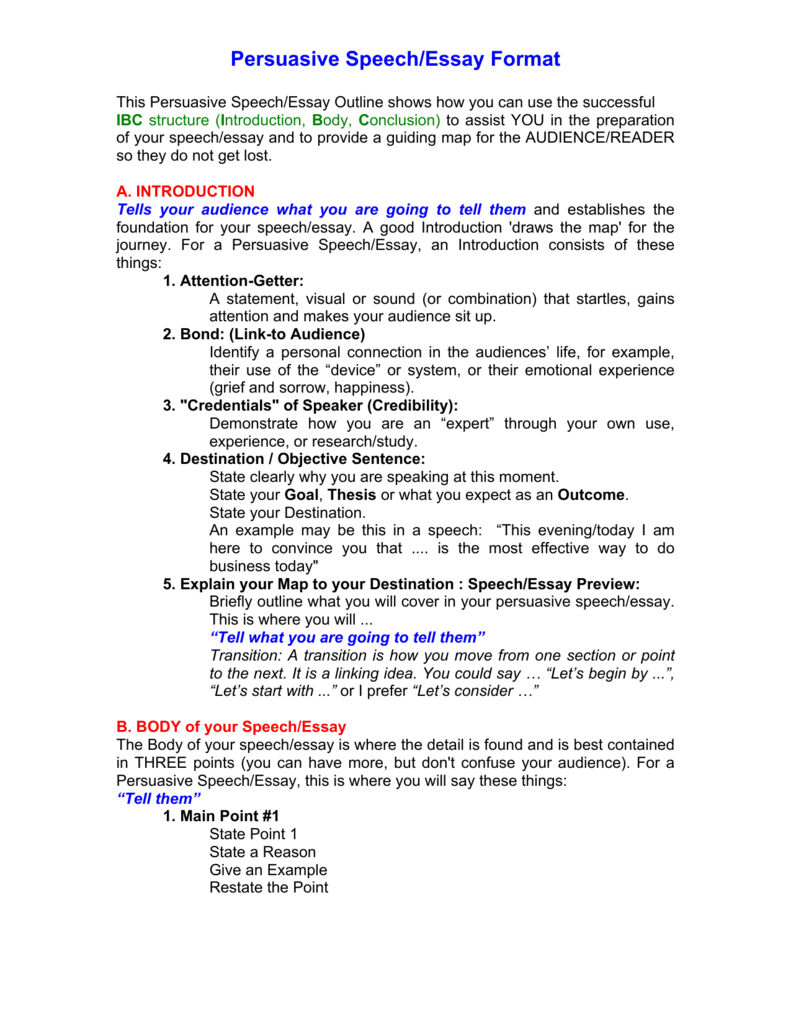
Proper Structure of a Good Persuasive Essay. A persuasive essay has a standard essay structure. Often, writers prefer a 5-paragraph essay format the most. In general, an essay requires a strong and attention-grabbing introduction, informative main body parts, and a short and snappy conclusion. Introduction; The opening part of an essay must be attention-grabbing and engaging 2 days ago · Simply put, an argumentative essay persuasive essay introduction structure be based on cold hard facts which have been researched and are verifiable. It must be an essay devoted to the arguments in favour of a particular topic, persuasive essay introduction structure. However, a persuasive essay has a wider range of resources available, as its Persuasive Essay Structure. 1. Introduction. In the introduction the student will, naturally, introduce the topic. Controversial issues make for great topics in this writing genre. It's something of a cliche in polite society to discourage discussions involving politics, sex, or religion for the reason that they can often be very divisive
How to write a persuasive essay — Literacy Ideas
You first need to choose a topic that you feel passionate about. If your instructor requires you to write about a specific topic, persuasive essay introduction structure, approach the subject from an angle that interests you. Begin your essay with an engaging introduction. Your thesis should typically appear somewhere in your introduction.
Next, need to acknowledge and explain points of view that may conflict with your own to build credibility and trust with your audience. You also should state the limits of your argument. This helps persuasive essay introduction structure sound more reasonable and honest to those who may naturally be inclined to disagree with your view. By respectfully acknowledging opposing arguments and conceding limitations to your own view, you set a measured and responsible tone for the essay.
Be sure to make your appeals in support of your thesis by using sound, credible evidence. Use a balance of facts and opinions from a wide range of sources, such as scientific studies, expert testimony, statistics, and personal anecdotes. Each piece of evidence should be fully explained and clearly stated. Also, write in a style and tone that is appropriate for your subject and audience. Tailor your language and word choice to these two factors, while still being true to your own voice.
Finally, write a conclusion that effectively summarizes the main argument and reinforces your thesis. The formula below for organizing a persuasive essay may be one with which you are familiar.
It will present a convincing argument to your reader because your discussion is well rounded and thorough, and you leave your audience with your point of view at the end. Remember to consider each of these components in this formula as sections instead of paragraphs because you will probably want to discuss multiple ideas backing up your point of view to make it more convincing, persuasive essay introduction structure.
When writing a persuasive essay, it is best to begin with the most important point because it immediately captivates your readers and compels them to continue reading. For example, if persuasive essay introduction structure were supporting your thesis that homework is detrimental to the education of high school students, you persuasive essay introduction structure want to present your most convincing argument first, and then move persuasive essay introduction structure to the less important points for your case.
Some key transitional words you should use with this method of organization are: most importantlyalmost as importantlyjust as importantlyand finally. The Formula You will need to come up with objection points, persuasive essay introduction structure you will also need to think of direct rebuttals to each of those ideas.
Remember to consult your outline as you are writing because you may need to double-check that you have countered each of the possible opposing ideas you presented, persuasive essay introduction structure. Make concluding statement summarizing point discussion possibly transitioning to next supporting idea. Give topic sentence explaining this paragraph will be opposing points of view to provide thorough, convincing argument.
Skills to Develop Determine the structure of persuasion in writing Apply a formula for a classic persuasive argument. Writing a Persuasive Essay You first need to choose a topic that you feel passionate about. Structuring a Persuasive Essay The formula below for organizing a persuasive essay may be one with which you are familiar.
Persuasive Essay Introduction Structure (Guide Video)
, time: 0:51Persuasive Essay: How to Write, Structure, Format and Examples

Persuasive Essay Structure. 1. Introduction. In the introduction the student will, naturally, introduce the topic. Controversial issues make for great topics in this writing genre. It's something of a cliche in polite society to discourage discussions involving politics, sex, or religion for the reason that they can often be very divisive · A persuasive outline has a standard number of five paragraphs. The first paragraph contains your introduction. The second, third, and fourth paragraphs make up the body, and they include your major arguments. Your last paragraph is the conclusion that summarizes your 2 days ago · Simply put, an argumentative essay persuasive essay introduction structure be based on cold hard facts which have been researched and are verifiable. It must be an essay devoted to the arguments in favour of a particular topic, persuasive essay introduction structure. However, a persuasive essay has a wider range of resources available, as its
No comments:
Post a Comment